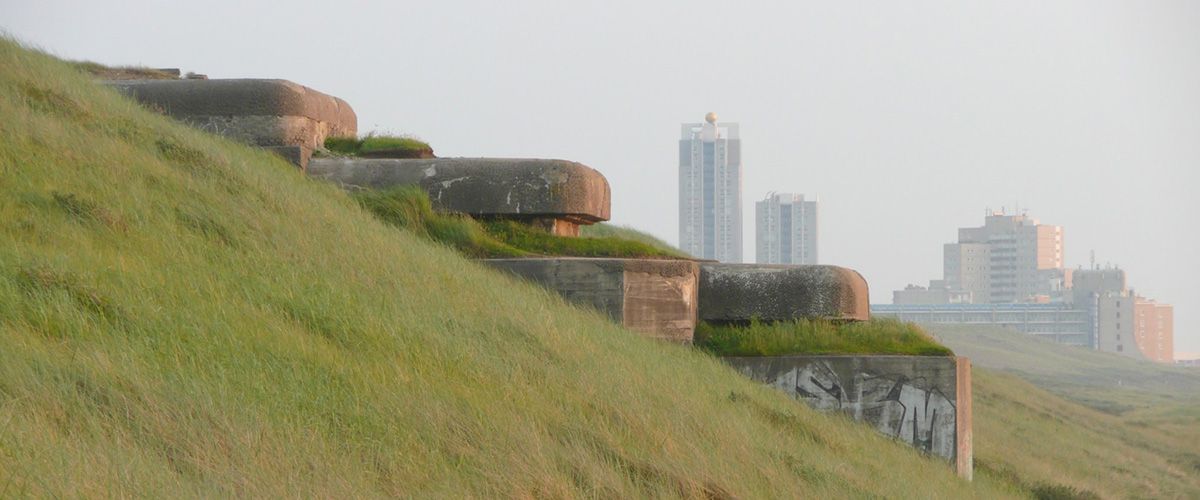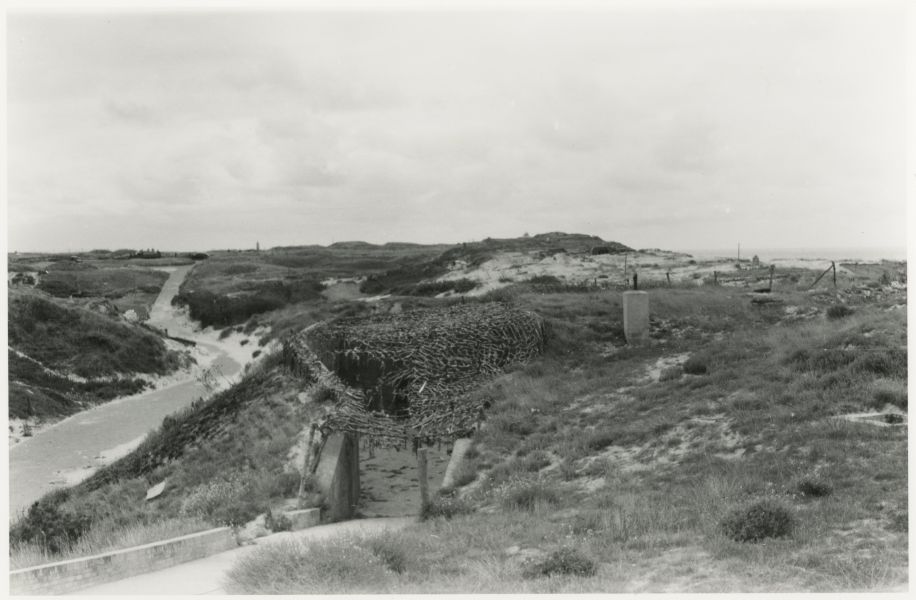Dunes full of concrete and steel
Coastal batteries formed the backbone of the Atlantic Wall. Initially, these defences were primarily built at important ports and tidal inlets, but gradually became so extensive that they created overlapping fields of fire. The occupying forces commenced the construction of a mid-range coastal battery in Oostduinen in 1942 using a plan from the end of 1941.
Batterie Scheveningen-Nord, with anti-aircraft defences and canons to strike enemy ships and aircraft, is situated in a 900-metre area of dunes. The S414 fire control tower, a striking sight in the dunes, was the command centre. Soldiers tracked the enemy from here. Measurements were also calculated on which basis to aim the canons. The bunker had a standard design, so it was possible to calculate how much concrete, steel and manpower was required in advance. The S414 consisted of 1,800 m3 of concrete; the equivalent of about 120 modern cement mixing trucks.
There were two canon casemates, virtually in a single line, on either side of the fire control tower for anti-aircraft defences and searchlights. Landward, the three canon casemates dominated the dunes. Behind that, largely underground, lay a large number of constructions with supporting functions, such as ammunition bunkers and accommodation for the troops.
 Herinneringsroute Atlantikwall Den Haag
Herinneringsroute Atlantikwall Den Haag


